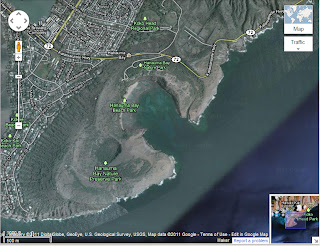As the human impact on Hanauma Bay began to threaten the ecosystem, measures passed in the 1990s have helped to protect and preserve the area and its inhabitants. First, admission became limited to 3,000 visitors per day with entrance fees charged to non-Hawaii residents. Also, Hanauma Bay is now closed on Tuesdays to give the ecosystem a day free from human contact each week to replenish. The most important and effective measure implemented to protect Hanauma Bay has been its mandatory educational program. Visitors are required to attend an information session and watch a short educational film before entering the park to learn more about the ecosystem, its inhabitants, and the best way to protect both. Greater investment in the educational program is likely to greater improve the human impact on Hanauma Bay. According to a study by University of Hawai'i researchers, the educational program benefits Hanauma Bay because it increases visitor satisfaction with the bay and increases the "biodiversity value derived from a healthier coral reef" (van Beukering and Cesar). It also leads to an "education spillover effect" in which the researchers predict that Hanauma Bay visitors will apply the knowledge they gain from the Hanauma Bay educational program to other ecosystems, preventing damage to coral reefs elsewhere. Based on these results, the researchers determined that the value of the program greatly exceeded the admission fees used to fund it and that people are willing to pay more than the current admission fees to enjoy the various recreational opportunities available at the bay. As a result of these findings, it is evident that the best way to improve and maintain positive human impacts on Hanauma Bay is through expansion of the educational program, funded by higher admission fees.
- "Hanauma Bay Oahu." <http://www.best-of-oahu.com/hanauma-bay-oahu.html>
- "Snorkeling at Hanauma Bay." <http://armchairhawaii.com/Attractions/hanauma/index.html>
- van Beukering, Pieter J.H. and Cesar, Herman S.J. "Ecological Economic Modeling of Coral Reefs: Evaluating Tourist Overuse at Hanauma Bay and Algae Blooms at the Kihei Coast, Hawai'i." Pacific Science (University of Hawai'i Press: 2004), vol. 58, no. 2:243-260.



